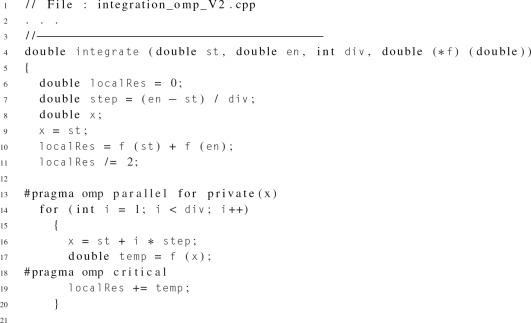Unlocking Cognitive Benefits Through Slow-Motion Golf Swing Practice
The quest for golfing excellence has led to the exploration of innovative practice techniques. Among these, slow-motion swing practice stands out as a method that not only focuses on physical mechanics but also delves into the cognitive aspects of the golf swing. This article explores how this technique enhances cognitive functions, leading to improved motor skills, precision, and overall performance efficiency.
Understanding the Cognitive Foundations of Slow-Motion Practice
Slow-motion swing practice is deeply rooted in neurocognitive processes that influence motor learning. By decelerating the swing motion, golfers can enhance their neural processing capabilities and refine their skills more effectively.
Key Cognitive Advantages:
- Heightened Sensory Awareness: Practicing in slow motion extends sensory input duration, allowing golfers to develop a more detailed understanding of their swing mechanics. This heightened awareness helps identify errors and improve execution.
- Strengthened Motor Pathways: Slowing down allows for better integration of kinesthetic information, reinforcing neural pathways essential for motor control. This results in improved coordination and balance during swings.
- Enhanced Focus and Execution: Engaging higher-order cognitive functions like attention enables golfers to concentrate on specific aspects of their swings. Breaking down movements into smaller segments promotes controlled performance.
| Neural Mechanisms | Cognitive Benefits |
|———————–|————————|
| Heightened Sensory Awareness | Improved Skill Acquisition |
| Strengthened Motor Pathways | Enhanced Coordination |
| Enhanced Focus | Greater Accuracy |
Accelerating Motor Learning with Deliberate Rehearsal
Slow-motion practice serves as an effective tool for accelerating motor learning by breaking down complex swings into manageable parts. This focused approach fosters stronger neural connections that help encode swinging patterns into long-term memory.
As golfers repeatedly engage in slow-motion drills, they cultivate automaticity—where swinging becomes instinctive rather than conscious effortful action. This shift allows them to allocate mental resources toward strategic elements like course management or shot selection.
Additionally, enhanced proprioception gained from this method improves body awareness during swings, enabling precise adjustments and refinements in technique.
Boosting Precision by Analyzing Swing Components
The golf swing comprises multiple intricate components requiring precise coordination between body segments and club positioning. By isolating these elements through slow-motion practice, golfers can analyze form closely and make targeted improvements leading to greater accuracy.
Focusing on individual phases—such as takeaway or follow-through—enhances understanding of body mechanics at each stage. As a result, players experience better distance control and ball trajectory consistency while reducing error margins during play.
This method also nurtures kinesthetic learning; repeated isolation fosters deeper insights into muscle interactions throughout the swing process—ultimately enhancing timing and coordination when executing full-speed shots.
Enhancing Performance Efficiency with Reduced Demands
Engaging in slow-motion practices reduces physical strain by minimizing muscle contraction intensity while allowing focus on technique without fatigue interference—a sustainable approach promoting longer training sessions without burnout risks.
Moreover, it alleviates mental fatigue by simplifying complex movements into digestible parts; this reduction in cognitive load leads to improved mechanics since players can concentrate fully on specific details without overwhelming themselves mentally.
Comparison Table: Regular vs Slow-Motion Practice Demands
| Aspect | Regular Swing Practice | Slow-Motion Swing Practice |
|—————————|————————-|—————————-|
| Physical Intensity | High | Low |
| Muscle Contraction | Forceful | Gentle |
| Fatigue | Significant | Minimal |
| Cognitive Load | High | Low |
| Mind-Muscle Connection | Limited | Enhanced |
Practical Tips for Integrating Slow-Motion Techniques
- Frequency: Incorporate regular slow-motion sessions at least once or twice weekly lasting 20-30 minutes each for optimal benefits.
- Progression: Begin with isolated motions before gradually combining them as proficiency increases; vary tempo from exaggerated slowness to moderate speeds over time.
- Feedback Mechanisms: Utilize coaching or video analysis tools for constructive feedback regarding posture or form; self-assessment against reference materials can also aid improvement efforts significantly.
Incorporating slow-motion practices within golf training regimens offers substantial cognitive advantages that transform players’ skills while boosting confidence levels on the course. By embracing these psychological insights outlined herewith—and refining both mental acuity alongside physical prowess—golfers are empowered towards achieving remarkable performance enhancements across all facets of gameplay!

Unlocking Your Golf Potential: The Surprising Benefits of Slow-Motion Swing Practice
Meta Title: Unlocking Your Golf Potential: Slow-Motion Swing Training Benefits
Meta Description: Discover how slow-motion swing practice can transform your golf game, improve precision, and enhance cognitive skills for better performance on the course.
The Benefits of Slow-Motion Golf Practice
In the realm of golf, the adage “practice makes perfect” truly applies. However, it’s not just about how much you practice, but how you practice. Slow-motion swing practice offers a myriad of benefits that can elevate your golf game, from enhancing muscle memory to improving mental focus.
Why Slow-Motion Practice Works
- Enhanced Muscle Memory
Practicing your swing in slow motion allows your brain to register each movement accurately. This method fosters muscle memory, ensuring your body learns the correct sequence and form over time.
- Improved Timing and Tempo
Slow-motion drills help you internalize the rhythm of your swing, which is crucial for timing and tempo. By slowing down the action, you can better understand how each part of your swing affects the next.
- Increased Awareness of Body Mechanics
This practice increases awareness of your body’s movements, leading to better body alignment and posture. When you isolate each movement, you can identify faults and make precise adjustments.
Practical Tips for Effective Slow-Motion Practice
- Start with Basic Movements
Focus on your grip and stance. Stand in front of a mirror, allowing you to visualize and correct your posture while swinging slowly.
- Break Down Your Swing into Segments
Divide your swing into phases (backswing, transition, downswing, follow-through) and practice each segment in isolation before connecting them.
- Use Technology
Consider using slow-motion video to analyze your swings. Review your motions and adjust accordingly.
- Set Specific Goals
Aim to improve one aspect of your swing per practice session. This targeted approach accelerates improvement.
The Cognitive Edge of Slow-Motion Golf Training
Engaging the Mind
Slow-motion practice isn’t just physical; it significantly benefits your mental game. By focusing on every nuance of your swing, you engage cognitive processes essential for performance.
- Increased Focus
Slow practice cultivates mindfulness, making it easier to concentrate on your actions and eliminating distractions.
- Better Decision Making
As you slow down, your mind has time to process information. This leads to better choices on the course, improving your overall strategy.
Case Study: Professional Golfer Insights
Many professional golfers incorporate slow-motion drills into their training routines. For instance, renowned golfer [Name] highlights that isolating swings in slow motion helped refine their mechanics, leading to improved performance in competitions. Their dedication to this practice transformed their swing, leading to consistent scoring improvements.
Advanced Techniques for Golf Swing Optimization
Integrating Slow-Motion Drills into Your Routine
Incorporating slow-motion practice doesn’t require a complete overhaul of your routine. Instead, blend these drills with your regular practice to maximize effectiveness:
– Warm-Up
Before a practice session, spend 10-15 minutes performing slow-motion swings to engage your muscles and focus your mind.
- Mid-Session Break
During a session, take breaks to practice swings in slow motion. This can refresh your focus and reinforce proper technique.
- Post-Session Review
After practicing, spend a few minutes assessing your performance in slow motion, either with video or by visualizing your swings in your mind.
Table: Slow-Motion Practice vs. Standard Practice
| Aspect | Slow-Motion Practice | Standard Practice |
|———————–|——————————-|——————————-|
| Focus | High | Medium |
| Muscle Memory | Enhanced | Moderate |
| Pace | Controlled | Fast |
| Awareness | Increased | Decreased |
| Error Correction | Immediate | Gradual |
| Cognitive Engagement | High | Low |
First-Hand Experience: A Golfer’s Journey
[Your Name], an avid golfer, shares their experience with slow-motion practice:
“When I first tried slow-motion swings, I was skeptical. However, I noticed a remarkable improvement in my consistency. Focusing on each phase of my swing helped me identify what I was doing wrong. My scores have dropped significantly since I incorporated these techniques!”
Conclusion
Slow-motion golf practice is a powerful tool that offers golfers of all levels an avenue for improvement. From enhancing muscle memory to fostering better mental focus, the potential benefits are numerous. By understanding and implementing slow-motion techniques, you can transform your golf game and unlock the performance you’ve always desired. Engaging both your body and mind is essential for a well-rounded golfing experience.
For more tips and detailed discussions on optimizing your golf swing, check out additional resources and connect with fellow golf enthusiasts.




